
How to Choose Bathroom Lighting
Search
Main Article: How to Choose the Right Light Fixtures for Your Room
The Purpose of a Bathroom
A bathroom is a smaller room designed mainly for bathing, cleaning and preparing the body. Bathrooms also feature sanitation such as a toilet and a sink. Full bathrooms feature a bath and/or shower, while powder rooms feature only a toilet and a sink.
The bathroom might be accompanied by a bathroom vanity unit, storage cupboards or linen closets. Occasionally the bathroom may double as a laundry room with a washer and dryer. Larger bathrooms may include a larger standalone bathtub and even a second sink and vanity.
The Lighting you'll need in a Bathroom
The bathroom includes specialized areas for cleaning, bathing and waste removal. The amount of floor space is often limited. The wall likely features a large mirror and vanity light, while below is a vanity unity with cupboards and drawers. Bathrooms are particularly practical rooms for performing tasks, rarely designed to feature relaxed seating areas or entertainment.
Lighting will need to be focused mainly on lighting the body and the face, particularly when using the mirror. Adapting your lighting choices to how people will use the room is important.
- Overhead ceiling lights are important in a bathroom for general lighting, helping to illuminate the bath or shower area. You'll likely have lower ceilings and no headroom or space for larger hanging fixtures, so will want to opt for lower-profile ceiling lights. If you have a much taller ceiling, you could consider a chandelier over the bath.
- Semi-flush or flush-mounted lights are mounted close to the ceiling and allow people to walk below. The main ceiling light fixtures should be mounted fairly centrally in the room, or positioned nearer to the bath or shower.
- Mini-Pendant Lights are an interesting alternative, hung from the ceiling at either side of the sink area. The colorful pendant lights will shine light mostly downwards to light the surface area, which is not ideal for lighting the face, but could work in concert with a vanity light above the mirror, or with an LED lighted mirror.
- Recessed "pot" lights can work in a bathroom since they take up no ceiling height. They are mounted inside the ceiling itself and shine light downwards. You'll need at least a few lights spread out across the room, and provides a modern minimalist look.
- Bath Vanity Lights are designed specifically for bathrooms, to be mounted above or to the side of the bath mirror. A row of lights are best placed above the mirror to shine light directly onto the face. Alternatively place a 1 or 2-light wall sconce/vanity light either side of the mirror.
- Accent lighting can be added, but options are somewhat limited. A small table lamp could work at the edge of the vanity and double as a night-light. Otherwise a night-light plugged into the wall is a good option to assist with using the bathroom at night and minimizing wakefulness.

The use of Lighting in your Bathroom
The main function of your lighting should be to help people to see in the dark, especially in the evening and at night. Bathrooms also often feature smaller windows and less natural light. If you have secondary or accent light, make sure a strong main light fixture is available when needed.
Also consider where in the room people will spend the most time and what they will be doing there. Most of the time spent in the bathroom is in the use of the toilet, the bath or shower, and the sink, with often limited room for moving around.
- Ambient Lighting is when the light is bright and spreads out in generally all directions, lighting up most of the room. Ambient light can also be background light. It is less focused and more diffused. Ceiling lights and vanity lights can create ambient lighting.
- Task Lighting is when the light is more focused into a smaller area, possibly aimed in its direction, and is used when performing tasks. Such as when putting on makeup or doing the hair, you'll need light fixtures nearby to properly light the body and face.
- Accent Lighting comes from small accents of light generally in the background. This are the finishing touches such as small novelty lamps or night lights that light up only the local area.

Where to put Lighting in a Bathroom
Main Light Fixtures
In a bathroom you'll likely want a main light fixture positioned fairly centrally in the room. Typically this is a semi-flush mount light or flush-mount lighting. One or two such lights is usually enough for a smaller room.
If the bathroom is longer than square, consider breaking it up into sections like separate rectangles, with one light in the center of each. Centrally positioned lights will emit light in all directions and light up most of the room.
Secondary Light Fixtures
To complement the main light fixture and provide additional layers and levels of light, add a couple of wall sconces at the sides of the sink, or a vanity light fixture above the mirror. A vanity light with enough bulbs could function also as the main light fixture in a smaller bathroom, but at least two layers of light (two or more light sources) is recommended.
Task Light Fixtures
Since most activities in the bathroom are focused tasks, any lights you add will function as task lights. Keep in mind then that any lighting you add should be practical and useful for the purposes of a bathroom. This includes hair and makeup, washing of hands, use of the toilet, shaving, bathing and showering.
Consider eyesight and glare
When placing lighting in a bathroom, remember that light comes from a light bulb in most cases. The light may or may not be covered in all directions. A vanity light positioned near a mirror should have appropriate shades around the bulbs to reduce glare shining into the eyes, since the light fixture is designed to shine onto the face. Try to avoid bare exposed bulbs.

How much Lighting does your Bathroom need?
The amount of light needed in a bathroom is usually at a high level compared to other rooms. Also the size of the room and the natural lighting coming in through windows will affect the amount of light needed.
Light is best measured in lumens, which is a measure of how much light reaches a surface at a given distance. In general it means "brightness" in a standardized way. You'll need to calculate an idea of how much light you want in the room, and then try to aim to achieve this across your light fixtures and lamps.
A general approach is as follows:
- Measure the length and width of the room in feet..
- Multiply the two numbers to get the "square feet".
- Multiply the square feet by the amount of lumens needed per square foot for the room - for a bathroom this is 70-80 lumens per square foot.
For example in an 6 x 10 foot bathroom:
- 6 x 10 = 60 square feet.
- 60 x 70 = 4200 total lumens on the low end.
- 60 x 80 = 4800 lumens on the high end.
In terms of light bulbs: A single 60-watt incandescent light bulb outputs about 800 lumens. If you were using purely 60-watt bulbs, you'd need at least e.g. 4200 / 800 = lig 5.25 ht bulbs minimally, up to 4800 / 800 = 6 bulbs maximally. So roughly 5 to 6 light bulbs at 60 watts each would be needed for a bathroom.

Recommended Lighting for a Bathroom
Here are our top picks for types of lighting and light fixtures that would work best in a bathroom.
Ceiling Lights
Wall Lights
Lamps

More Rooms to Explore
Shop for BathroomLighting
We've curated our light fixtures to save you time.
Shop now by showing only bathroom lighting.
Explore Topics

Table of Contents
How to Choose Bathroom LightingThe Purpose of a BathroomThe Lighting you'll need in a BathroomThe use of Lighting in your BathroomWhere to put Lighting in a BathroomHow much Lighting does your Bathroom need?Recommended Lighting for a BathroomMore Rooms to ExploreShop for BathroomLightingCommentsShopping Ideas
Trending

































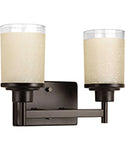
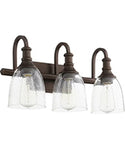
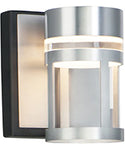
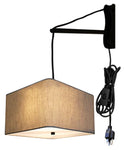
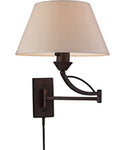
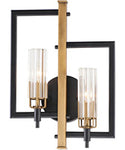

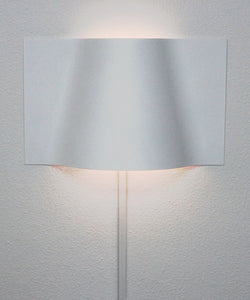



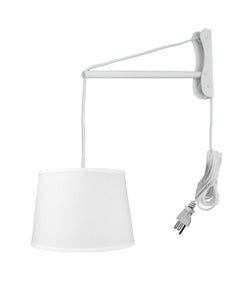












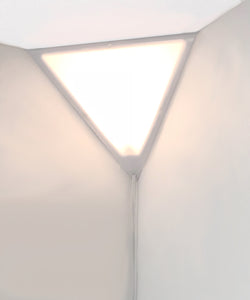

Comments